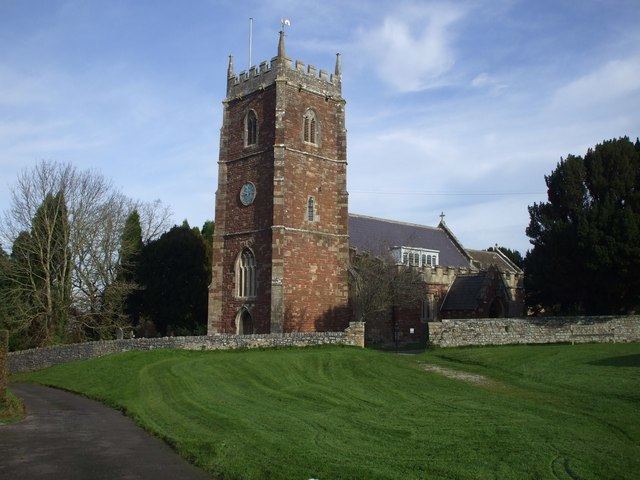Population 799 (2011) Civil parish Abbot's Leigh Local time Tuesday 7:34 AM | OS grid reference ST545735 Dialling code 01275 | |
 | ||
Weather 2°C, Wind W at 14 km/h, 91% Humidity | ||
Abbots Leigh is a village and civil parish in Somerset, England, about 3 miles (4.8 km) west of the centre of Bristol.
Contents
Map of Abbots Leigh, Bristol, UK
History
The original Middle English name was Lega and the village became Abbots Leigh in the mid-12th century when Robert Fitzharding (first Earl of Berkeley), who purchased the manor having been rewarded as Lord of the Manor of Portbury by the king, He also purchased Bedminster, Hareclive and Billeswick manors. He went on to found the Abbey of St Augustine at what was Billeswick and bequeathed the income from the parish to support the Abbey Because of this connection to the abbey, when the Diocese of Bristol was carved out of the Bath and Wells, Gloucester and Worcester diocesan territories (Patent Roll, Henry V111, Art. 9, June 1542 ) the boundary to the diocese was drawn around the parish, including the Saxon 'enclosure' at Hamgreen which had been part of Portbury manor lands up to this time. All the surrounding parishes in Somerset are in Bath and Wells diocese. The Parish Map shows this very extended historic boundary which puts St Katherine's School and Chapel Pill Farm both indisputably within the parish and not in Pill as everyone would think!
The parish of Abbots Leigh was part of the Portbury Hundred.
The manor house here, also named Abbot's Leigh or Leigh Court, was a resting place of Charles II during his escape to France in 1651. He arrived on the evening of 12 September, staying at the home of Mr and Mrs George Norton, who were friends of the Kings's travelling companion, Jane Lane. The Nortons were unaware of the King's identity during his three-day stay.
A description of the house appears in the book The Escape of Charles II, After the Battle of Worcester by Richard Ollard:
"Abbots Leigh was the most magnificent of all the houses in which Charles was sheltered during his escape. A drawing made in 1788, only twenty years before it was pulled down, shows a main front of twelve gables, surmounting three storeys of cowled windows; a comfortable, solid west country Elizabethan house."
While staying at Abbots Leigh, Charles deflected suspicion by asking a trooper, who had been in the King's personal guard, to describe the King's appearance and clothing at the Battle of Worcester. The man looked at Charles and said, "The King was at least three inches taller than you."
The King's escape route is commemorated in the Monarch's Way long distance footpath which passes through the village.
In 1942, Rev. Cyril Vincent Taylor (1907–1991) who, at the time, was a producer of Religious Broadcasting at the BBC and was stationed here, wrote a hymn tune which he named after the village. The tune is commonly used with hymns such as "Glorious Things of Thee Are Spoken" (for which it was originally written), "Father Lord of All Creation", "God is Here", "Go My Children, With my Blessing" and "Lord, You Give the Great Commission".
Governance
The parish is in the unitary authority of North Somerset which was created in 1996, as established by the Local Government Act 1992. It provides a single tier of local government with responsibility for almost all local government functions within its area including local planning and building control, local roads, council housing, environmental health, markets and fairs, refuse collection, recycling, cemeteries, crematoria, leisure services, parks, and tourism.It is also responsible for education, social services, libraries, main roads, public transport, Trading Standards, waste disposal and strategic planning, although fire, police and ambulance services are provided jointly with other authorities through the Avon Fire and Rescue Service, Avon and Somerset Constabulary and the Great Western Ambulance Service.
North Somerset's area covers part of the ceremonial county of Somerset but it is administered independently of the non-metropolitan county. Its administrative headquarters is in the town hall in Weston-super-Mare. Between 1 April 1974 and 1 April 1996, it was the Woodspring district of the county of Avon. Before 1974 that the parish was part of the Long Ashton Rural District.
The parish is represented in the House of Commons of the Parliament of the United Kingdom as part of the North Somerset county constituency, which elects one Member of Parliament (MP) by the first past the post system of election. It is also part of the South West England constituency of the European Parliament which elects seven MEPs using the d'Hondt method of party-list proportional representation.
Parish church
The Church of England parish church of the Holy Trinity is a 15th-century Perpendicular Gothic building, restored and partially rebuilt in 1847–48 after a fire. The tower has six bells, three of which were cast in 1781 by William Bilbie of the Bilbie family. English Heritage has designated Holy Trinity a Grade II* listed building.
